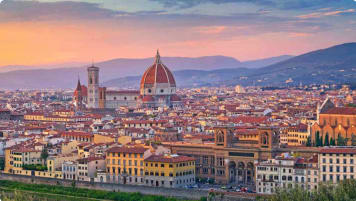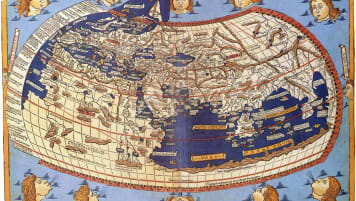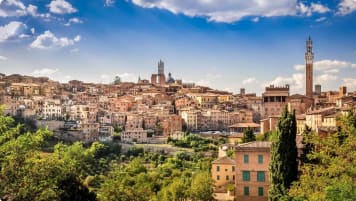Southern Italy
Southern Italy: from Magna Graecia to Italian Unification When people think of Italy, Rome, Venice, and Florence often come to mind first. Yet, the country offers much more beyond its northern attractions. Venturing south from…
5 Jan 20 · 10 mins read
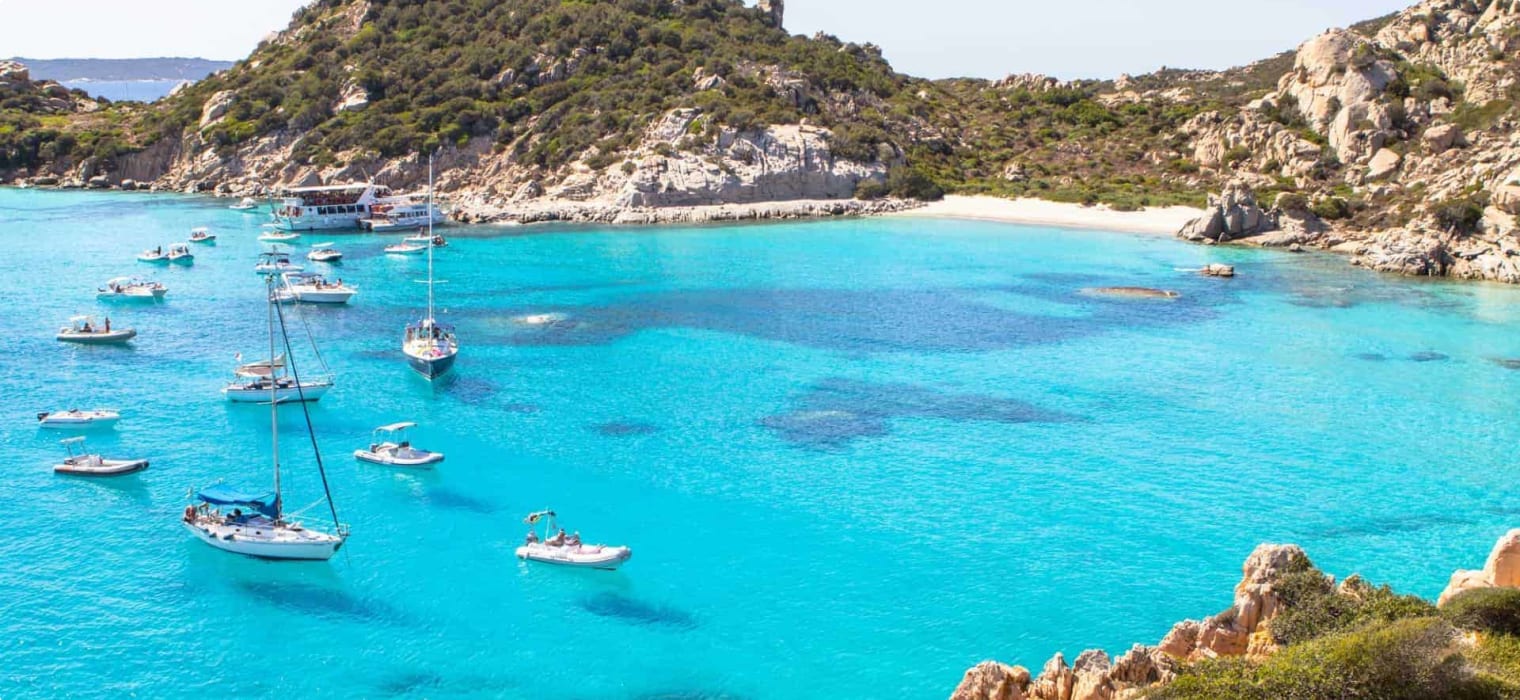
Southern Italy: from Magna Graecia to Italian Unification
When people think of Italy, Rome, Venice, and Florence often come to mind first. Yet, the country offers much more beyond its northern attractions. Venturing south from Rome leads to quieter surroundings and a more unhurried way of life. As Paris Review editor Nathaniel Rich aptly put it in 2005, many tourists perceive the southern regions as if suspended in an eternal slumber.
In the southern region, particularly in the heel of Italy, one encounters Greek rather than Roman ruins, and areas more closely linked to farming than industrialization. Here, locals are more inclined to converse in their respective regional dialect rather than English or standard Italian. Visitors are treated to the captivating cave dwellings of Matera, the haunting remains of Pompeii, the majestic Mount Vesuvius – Europe’s sole active mainland volcano, and the stunning azure waters of the Amalfi Coast.
Southern Italy encompasses distinct regions, including:
- Abruzzo
- Basilicata
- Calabria
- Campania
- Molise
- Puglia
- Sicily*
- Sardinia*
(While the Italian National Institute of Statistics classifies Sicily and Sardinia under ‘Insular Italy’ separately, grouping the rest as ‘South Italy,’ discussions about Southern Italy often include Sardinia despite its closer proximity to central Italy geographically.)
This article provides a concise historical overview of Southern Italy, spanning ancient times to its eventual unification with the north in the 19th century, while highlighting essential historic sites and attractions in the region for travellers embarking on an Italy tour. For further exploration, readers can delve into this article dedicated to the early history of Sicily.
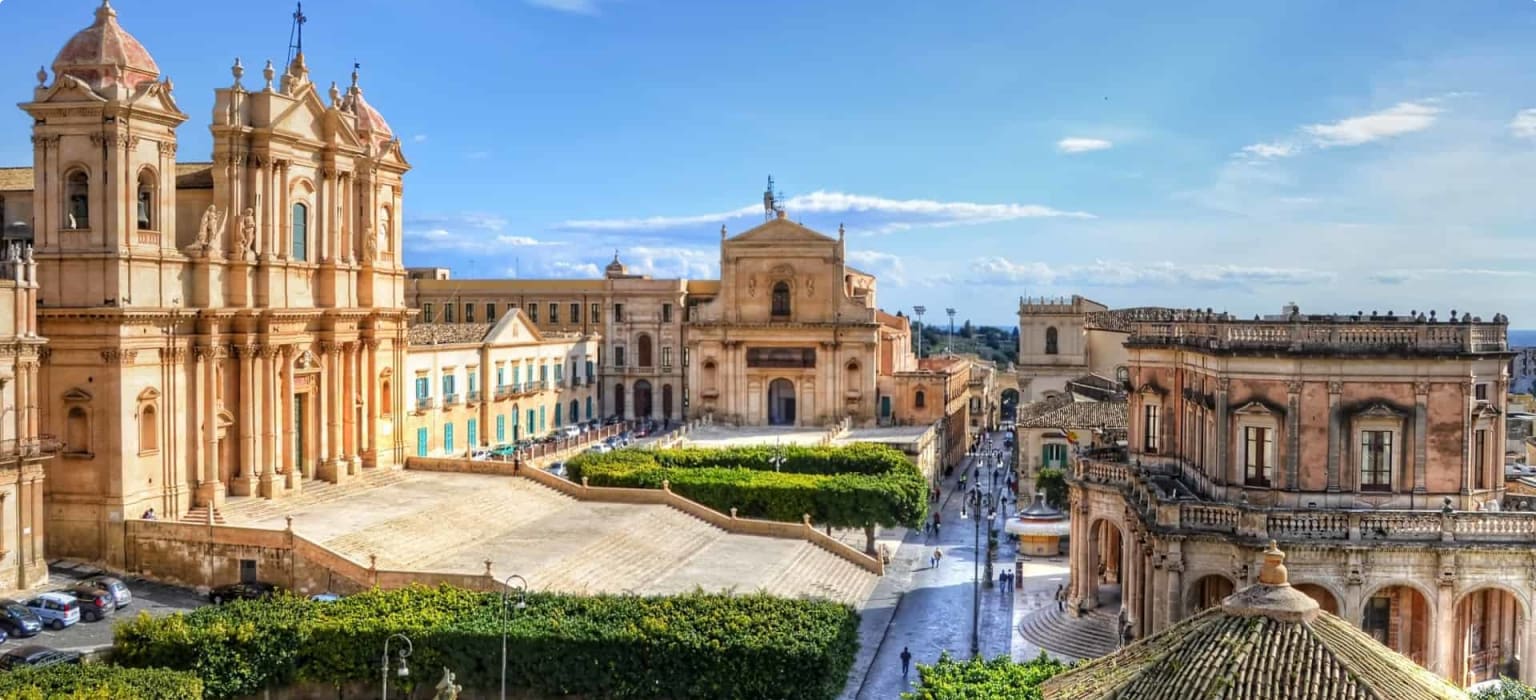
Magna Graecia in Southern Italy
Since prehistoric times, Southern Italy has been a hub of human settlements. In the 7th century BC, it emerged as a vital center of Greek civilization through Hellenic colonies along its coastal regions. The Greeks, lured by the area’s fertile lands and strategic trade positioning, established multiple colonies under the collective term “Magna Graecia” or ‘Great Greece’.
The earliest Greek colony on the Italian mainland was Cumae, founded around the 7th century BC. Settlers from Cumae went on to establish new cities like Neapolis, known today as Naples. Another significant Greek colony in Southern Italy was Siracusa (Syracuse, Sicily), renowned as the birthplace of Archimedes, a city that rivaled Athens in size during the 5th century BC.
Noteworthy Greek settlements included Thurii, where the esteemed historian Herodotus retired; Elea, the birthplace of the Eleatics, a pre-Socratic school of philosophy; Tarentum, founded by the Spartans; and Croton, where the philosopher and mathematician Pythagoras initiated an ethico-political community, and where the renowned 6th-century BC athlete Milo was born.
Travelers exploring Sicily today can witness the enduring Greek influence on the island through landmarks like Agrigento’s Valle dei Templi, Segesta’s Greek temple and ancient theatre, and the Greek ruins scattered throughout Syracuse.

The Roman Empire
Magna Graecia loosely represented an ’empire’ where unity was absent, characterized by shared language and culture among colonies. This lack of centralized power proved detrimental when confronted by more organized entities like the Roman Empire, emerging from a humble beginning in Rome.
By the 3rd century BC, Sicily became Rome’s initial province, paving the way for Roman domination over southern Italy. The Romans swiftly exploited Sicily’s resources, imposing the Roman tithe requiring a tenth of its agricultural yield to be sent to Rome annually.
Despite Roman rule lasting for centuries, Southern Italy remained predominantly Greek in language and customs. The Romans, with a profound appreciation for Greek culture, allowed the territories in the southern peninsula to preserve their Hellenic identity largely unaltered.
The Roman Empire Falls, Foreign Powers Enter
The fall of the Roman Empire in 476 AD, marked by pressure from the Goths, saw the rise of Odoacer, a Germanic warrior, who seized power in Southern Italy. Following his demise, the Ostrogoths assumed control before making way for the Byzantine Empire’s eastern arm from Constantinople.
In the ensuing centuries, the Byzantine Empire faced challenges from various foreign powers like the Lombards and the Arabs, triggering a tumultuous period in Italy as the peninsula fragmented into independent kingdoms and rival city-states.
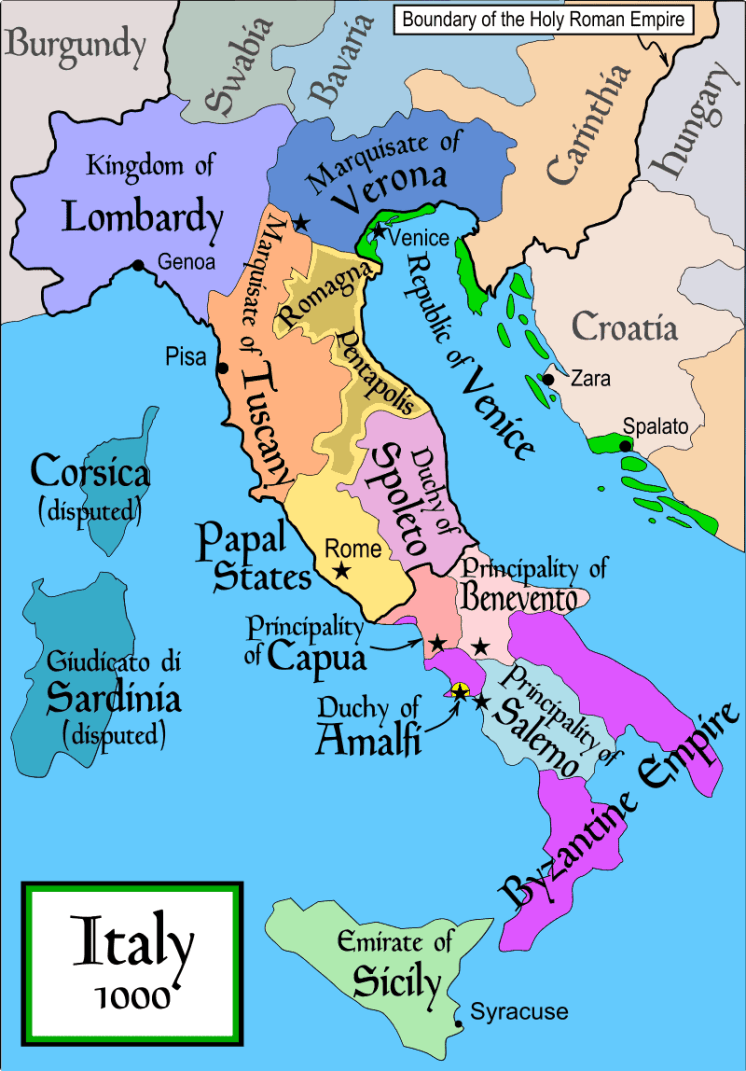
Meanwhile, to the west, Charlemagne of the Franks was anointed as the “Emperor of the Romans” by Pope Leo III in 800 AD, establishing the Holy Roman Empire and extending his rule over Western and Central Europe, including parts of Italy.
Although Southern Italy eluded Frankish rule, it eventually succumbed to the Arabs. In the 9th century, the Islamic caliphate assumed control, instituting the Emirate of Sicily with Palermo as its hub, transforming churches into mosques and enforcing Arabic as the primary language. The Arab dominion over the island endured for over two centuries.
The Normans, descendants of Vikings who settled in northern France, entered Southern Italy initially as mercenaries supporting rival factions and later as autonomous conquerors aiming to establish their own domains.
In a strategic move, Pope Nicholas II, amid tensions with the Holy Roman Empire, allied with the Normans and engaged in conflict against a rival Pope (Benedict X) to secure his position. By 1059, he appointed Robert de Hauteville, also known as ‘Robert Guiscard’ (guiscard meaning ‘cunning’ in Old French), as the Duke of Apulia and Calabria, designating him as the ‘future lord of Sicily’. In return, Guiscard pledged allegiance as a vassal to Rome.
Guiscard and his brother, Roger Bosso, participated in the siege of Palermo against the Arabs, a pivotal confrontation that culminated in the Normans establishing complete dominion over Southern Italy by the 11th century.
‘Two Sicilies’
Robert Guiscard divided Sicily among his brother Roger, who later became Roger I, granting him the title of Count in 1071. Over time, Roger I expanded his control, uniting the entirety of Sicily and Malta by 1091. These territories were then amalgamated with Robert’s duchy, consolidating the foundation of the influential Kingdom of Sicily that exerted supremacy over Southern Italy. Roger I’s son, Roger II, ascended to the throne after being crowned King of Sicily by the Pope on Christmas Day in 1130.
The Norman lineage reached its pinnacle with Roger II’s daughter, Constance, who wedded Henry VI of the Hohenstaufen dynasty, resulting in the birth of Frederick II. Under Frederick II’s reign, the Hohenstaufen dynasty expanded its dominion through strategic alliances and conquests, extending its power from Southern Italy to encompass territories in Germany and even Jerusalem.
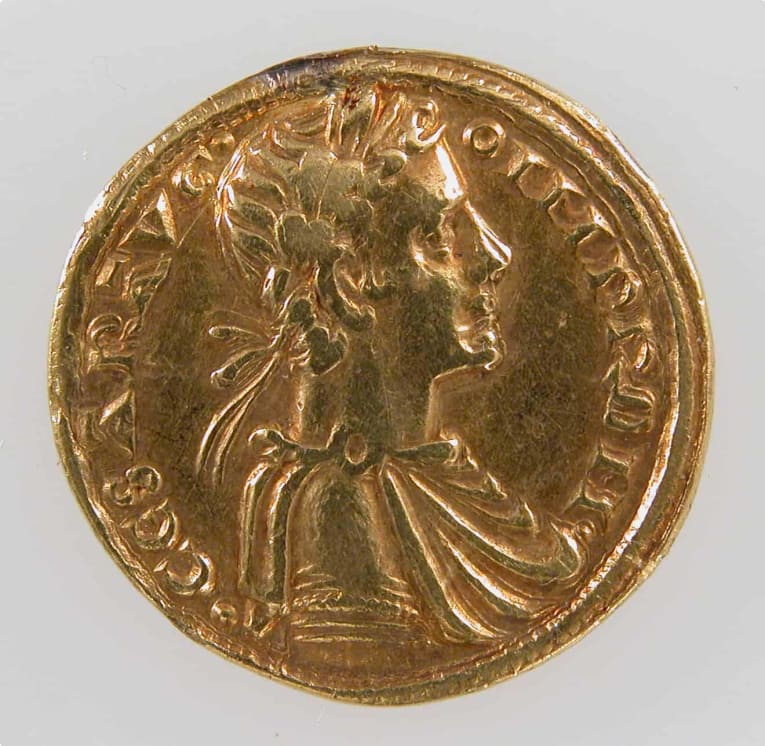
Following Frederick II’s demise, the Hohenstaufen dynasty came to an end, paving the way for Charles of Anjou, brother of French King Louis IV, to seize control of the kingdom. Charles’s authoritarian governance incited a popular uprising known as the Sicilian Vespers, sparked by an event in Palermo on Easter Monday in 1282. This rebellion led to Sicily’s separation from the mainland, ultimately falling under the rule of the Spanish House of Aragon, who actively supported the revolt to wrest control from the French.
Subsequently, the once-unified kingdom splintered into “two Sicilies”: one governed by the House of Aragon and the other, known as the “Kingdom of Naples” by modern scholars to differentiate it from the Spanish-ruled “Kingdom of Sicily,” ruled by the House of Anjou. During the ongoing conflicts between Sicily and Naples, the local barons amassed increasing influence, solidifying feudalism as the predominant social system in both realms.
In 1442, Naples succumbed to Alfonso V of Aragon, the ruler of Sicily, who assumed the title “King of the Two Sicilies” in 1443, a designation that persisted through his lineage in the ensuing years.
Italian Unification
In the 19th century, after enduring occupations by the French and Austrians, Italy embarked on the Risorgimento movement, advocating for unity and independence. This led to the birth of the Kingdom of Italy in 1861, with Victor Emmanuel II being crowned as its first monarch. His pivotal conquest of Rome in 1871 solidified the country’s unification, marking the city as the new capital following transitions from Turin and Florence.
In 1946, Italy democratically transitioned into a republic through a referendum, prompting Victor Emmanuel’s son, Umberto, to relinquish the throne. Despite these historical milestones, Italy’s unity continues to evolve. The delineation between Northern and Southern Italy persists, exemplified by the Lega (formerly the Northern League) advocating for regional autonomy. Economic disparages between the regions have led to a trend of young Southerners migrating north in search of better prospects, reminiscent of the mass emigration of impoverished Southern Italians to the United States in the late 19th century.
Notwithstanding the challenges, Southern Italy harbours pockets of optimism and growth. Matera, a once impoverished town in Basilicata, transformed its fortunes remarkably. From being among Italy’s poorest areas, Matera ascended to the prestigious title of European Capital of Culture for 2019, showcasing the region’s resilience and potential for revitalization.
Travelling to Southern Italy
Travellers seeking a more laid-back pace (and a thinner holiday crowd) fly to Southern Italy to bask in its sunshine, try its diverse cuisine, and view its historic sites.
Let’s look at some of the hidden gems you can visit in Southern Italy.

Matera
The city of Matera in Basilicata is renowned for its distinctive sassi, which are cave dwellings carved into limestone and have been inhabited since the Paleolithic era. These dwellings evolved over time to include homes, shops, churches, and monasteries nestled within the natural caves of the Murgia Plateau. Matera’s historic old town is divided into two main sections, namely the Sasso Barisano and the Sasso Caveoso, with Matera’s Romanesque cathedral standing between them. Recognized for their cultural significance, the Sassi of Matera are inscribed on the World Heritage List.
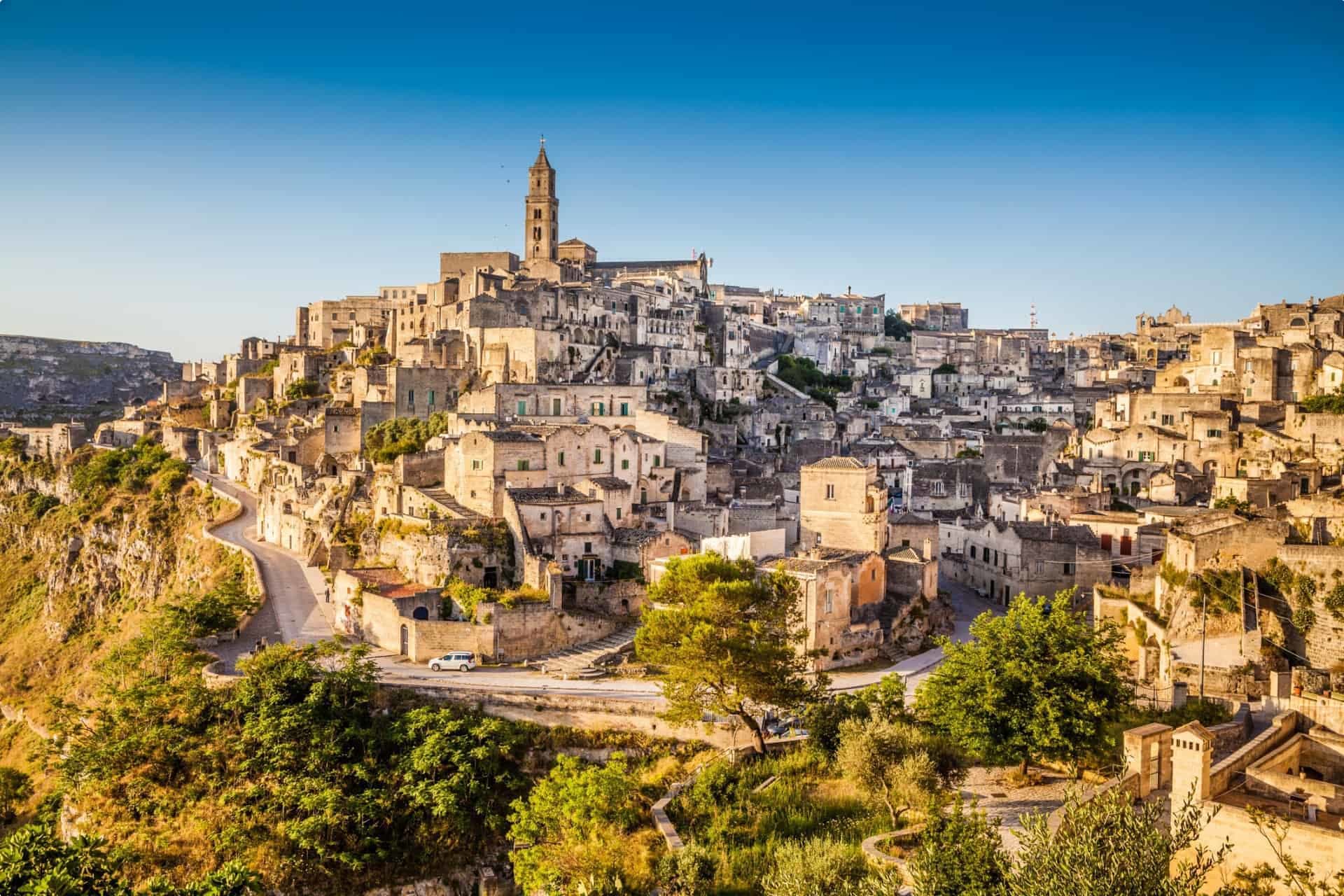
During the 1950s, these caves sheltered the city’s impoverished residents until the government relocated them due to the harsh living conditions. Subsequent major renovations transformed the area, now offering travelers the unique opportunity to lodge in cave B&Bs and dine in cave restaurants, providing unparalleled views of this ancient settlement.
Aeolian Islands
Located off the coast of Sicily, the Aeolian Islands consist of seven stunning destinations: Vulcano, Lipari, Salina, Panarea, Stromboli, Filicudi, and Alicudi. These islands, born from volcanic activity, are a magnet for tourists seeking sun-kissed beaches and crystal-clear blue waters during the summer months. One cannot ignore the allure of the naturally sweet Malvasia delle Lipari wine, a local specialty named after the largest island in the Aeolian chain. Notably, Vulcano, living up to its name, boasts an active volcano, as does the dramatic island of Stromboli.
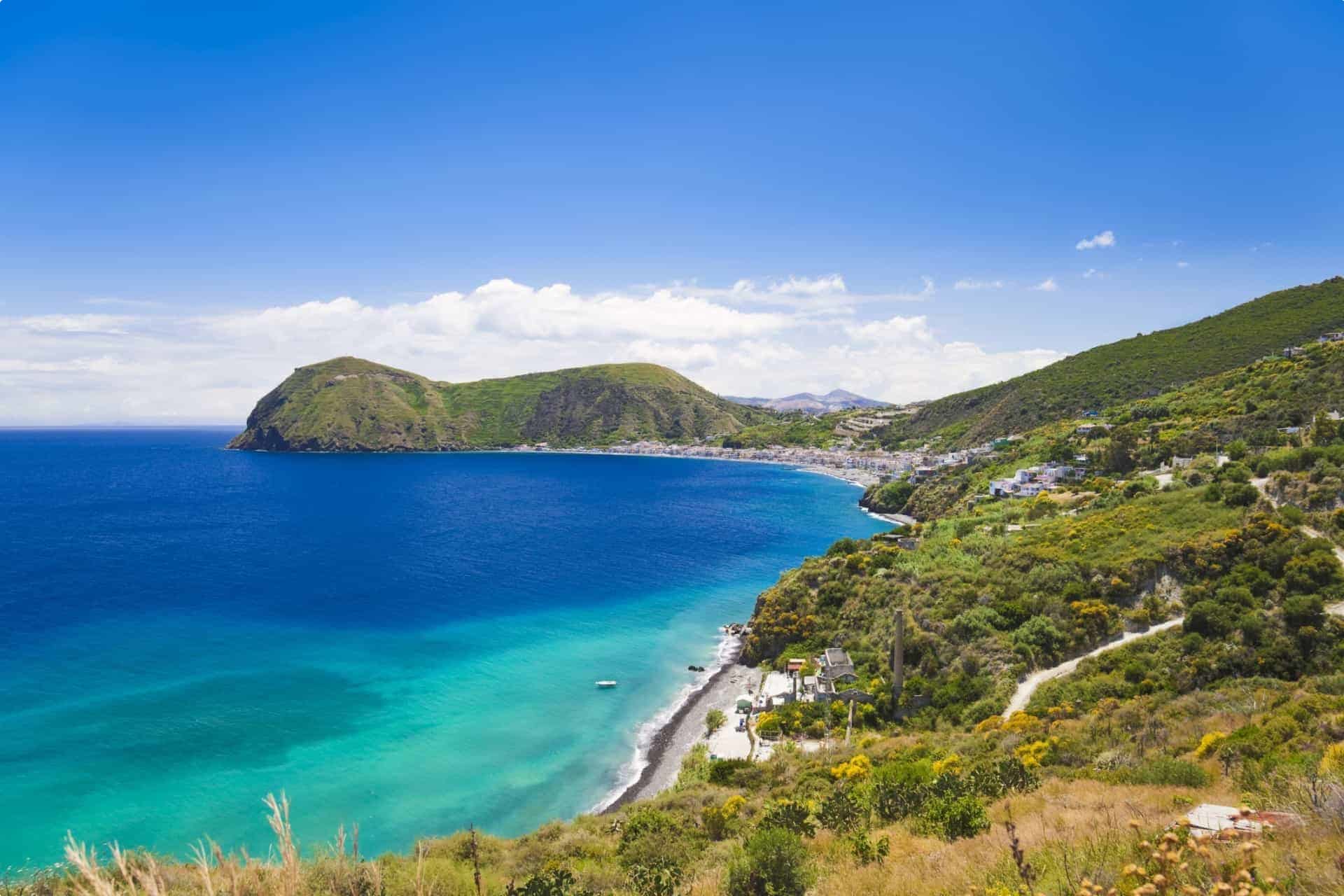
Naples
Located 23 kilometres southeast of Naples lies the historic Roman city of Pompeii, famously obliterated, alongside neighbouring Greco-Roman towns Herculaneum and Torre Annunziata, during the catastrophic eruption of Mount Vesuvius in 79 AD. This catastrophic event was immortalized in the meticulous and vivid accounts penned by Pliny the Younger in his letters to the renowned Roman historian Tacitus.
…tall broad flames blazed from several places on Vesuvius and glared out through the darkness of the night. My uncle soothed the fears of his companions by saying that they were nothing more than fires left by the terrified peasants, or empty abandoned houses that were blazing. He went to bed and apparently fell asleep, for his loud, heavy breathing was heard by those passing his door. But, eventually, the courtyard outside began to fill with so much ash and pumice that, if he had stayed in his room, he would never have been able to get out. He was awakened and joined Pomponianus and his servants who had sat up all night. They wondered whether to stay indoors or go out into the open, because the buildings were now swaying back and forth and shaking with more violent tremors. (Source)
The now preserved World Heritage Sites offer a captivating insight into ancient Italian life and the devastating impact of natural calamities on human existence.
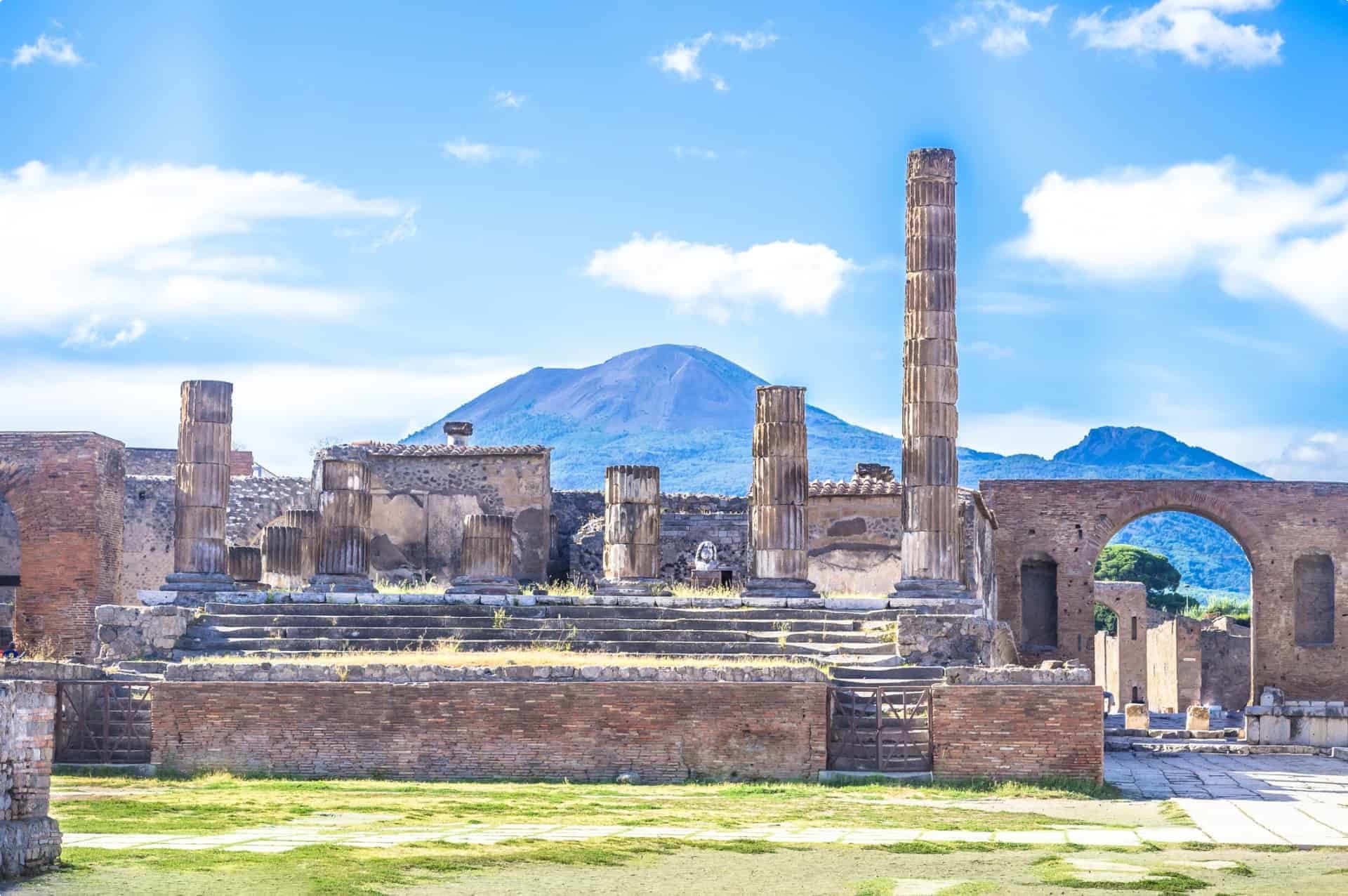
Exploring Naples extends beyond its historic center and museums; a trip to this vibrant city would be incomplete without savouring the renowned Neapolitan pizza. Legend has it that this iconic Italian delicacy was crafted by Neapolitan chefs during Queen Margherita’s 1889 visit. The classic Pizza Margherita features a base of dough topped with tomato sauce, mozzarella di bufala, and fresh basil.
In Naples, pizza-making is a revered art form, overseen by the nonprofit Associazione Verace Pizza Napoletana. Recognized for its cultural significance, the tradition was inscribed on UNESCO’s Intangible Cultural Heritage of Humanity list in 2017.
Palermo
Palermo, known as Panormus in Latin, holds significant historical importance within Italy, making it a compelling destination for those keen on exploring a city rich in diverse imperial influences. Founded by Phoenician traders in the 8th century BC, Palermo transitioned through various rulers, evolving from a Carthaginian outpost to a Roman municipality and later, an Ostrogothic enclave. The city’s pivotal transformation took place in 831 when it fell to the Arabs, propelling Palermo into a period of prosperity as a pivotal hub for commerce before the Normans’ arrival, under whom Palermo flourished as the majestic capital of the Kingdom of Sicily.
The renowned Palermo Cathedral, or Cattedrale di Palermo, stands as a prime illustration of Sicily’s distinctive Arab-Norman architectural fusion, reflecting a meld of styles shaped by centuries of foreign rule. Recognized as a UNESCO World Heritage Site, this cathedral is one of nine structures embodying the architectural legacy of the Norman reign over Sicily from 1130 to 1194.
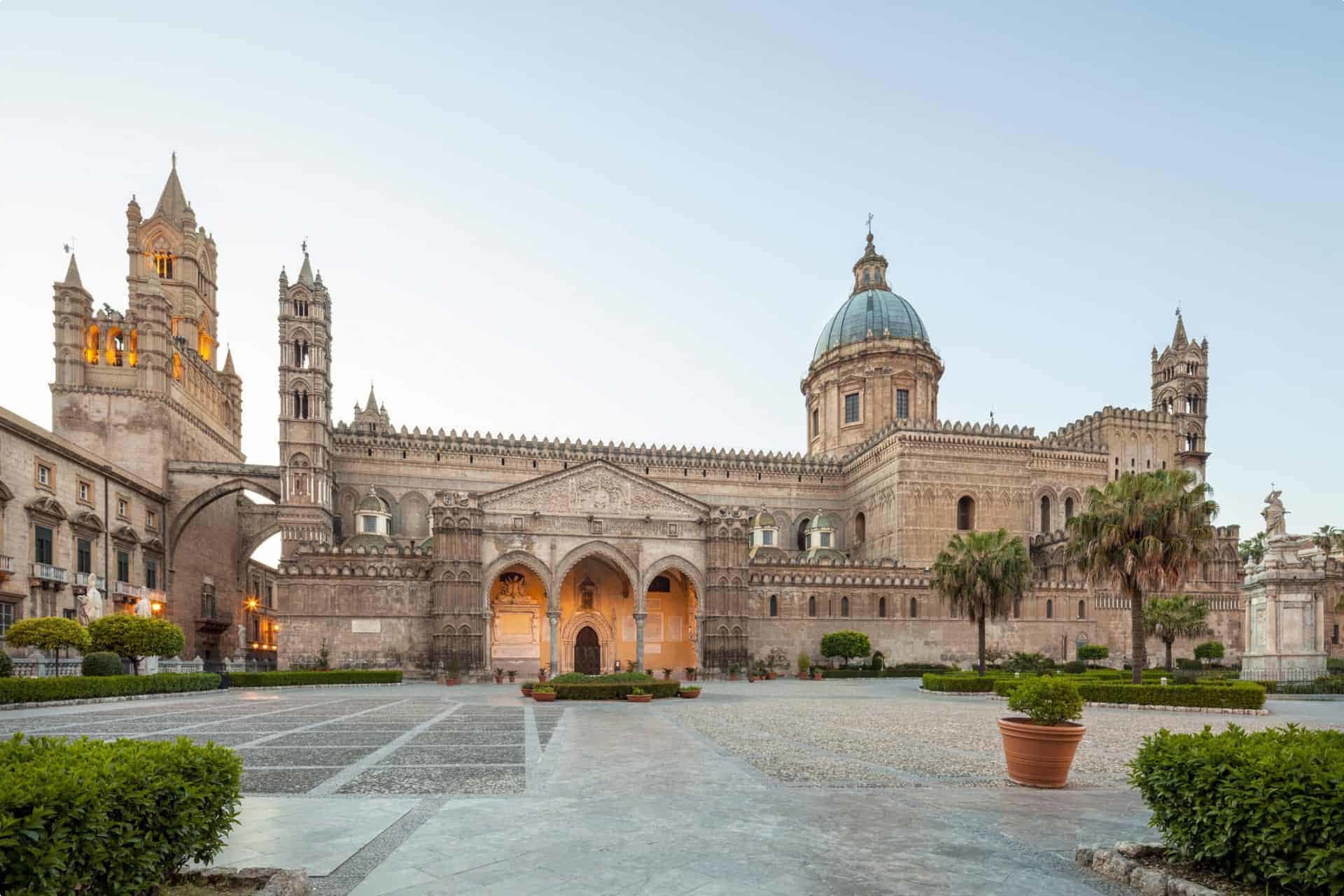
Agrigento
In Sicily, Agrigento boasts the impressive Valle dei Templi (Valley of the Temples), a sprawling Greek archaeological site preserving the ruins of Akragas, the city’s original Greek name dating back to the 6th century BC.
Within the Valley of the Temples lies the remarkable Temple of Concordia, a prime example of a well-preserved ancient Greek temple that has remained virtually intact since its construction in 430 BC. Perched on a hill overlooking the valley, modern Agrigento still retains echoes of its Hellenic heritage. An illustration of this blend of eras is the Church of Santa Maria dei Greci, a 13th-century church situated on the grounds of an ancient Greek temple.
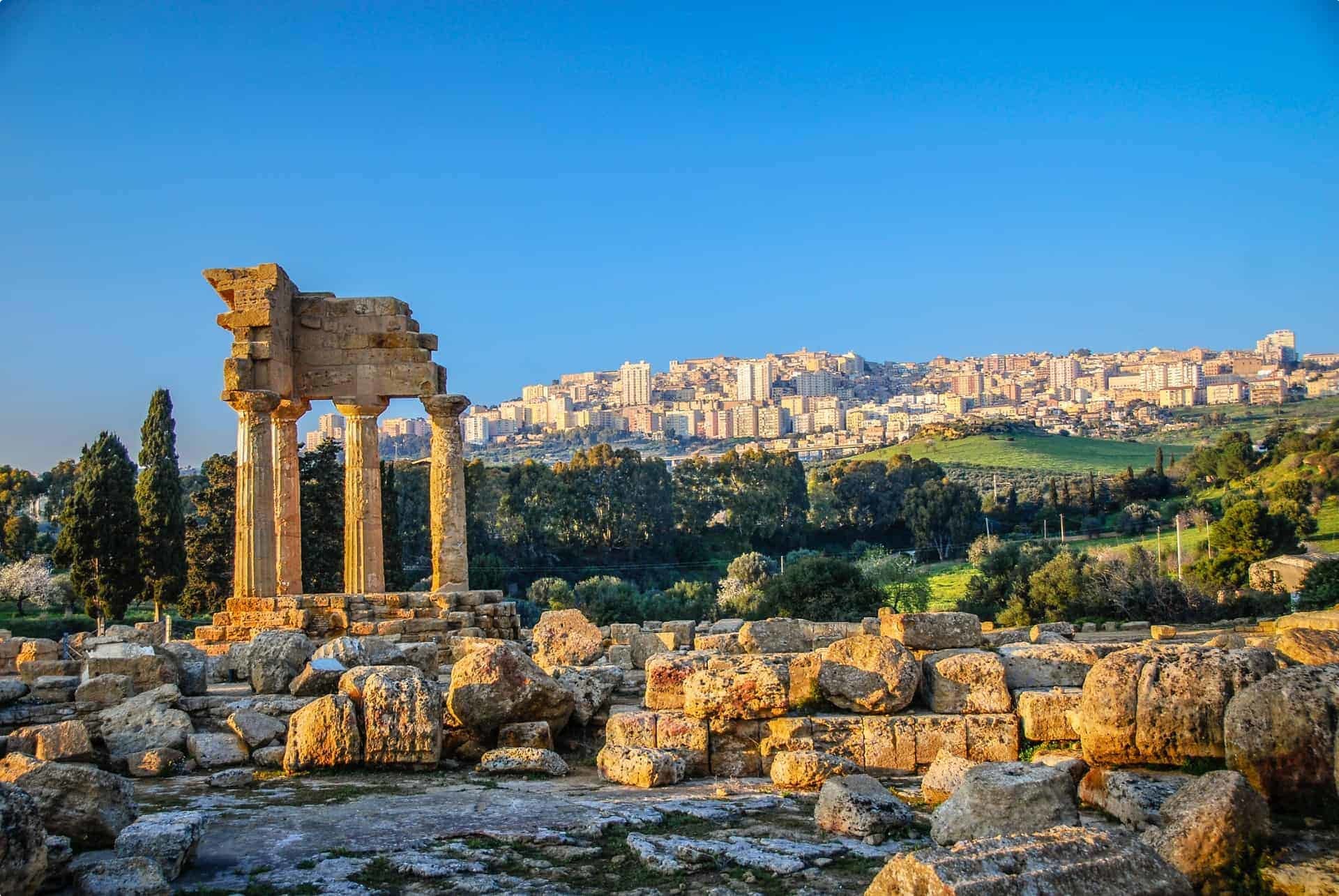
Bari
Bari, located in Apulia on the Adriatic coast, boasts a rich historical connection with other cities in Southern Italy. It stands out with a bustling urban center adorned with chic stores and stylish restaurants. The enchanting Old Bari, known as Bari Vecchia, stands as the city’s historic nucleus. Its labyrinthine alleys guide visitors to the revered Basilica of Saint Nicholas, the resting place of Bari’s patron saint.
Venturing beyond the city limits unveils a plethora of scenic coastal gems, including the charming seaside town of Polignano a Mare.
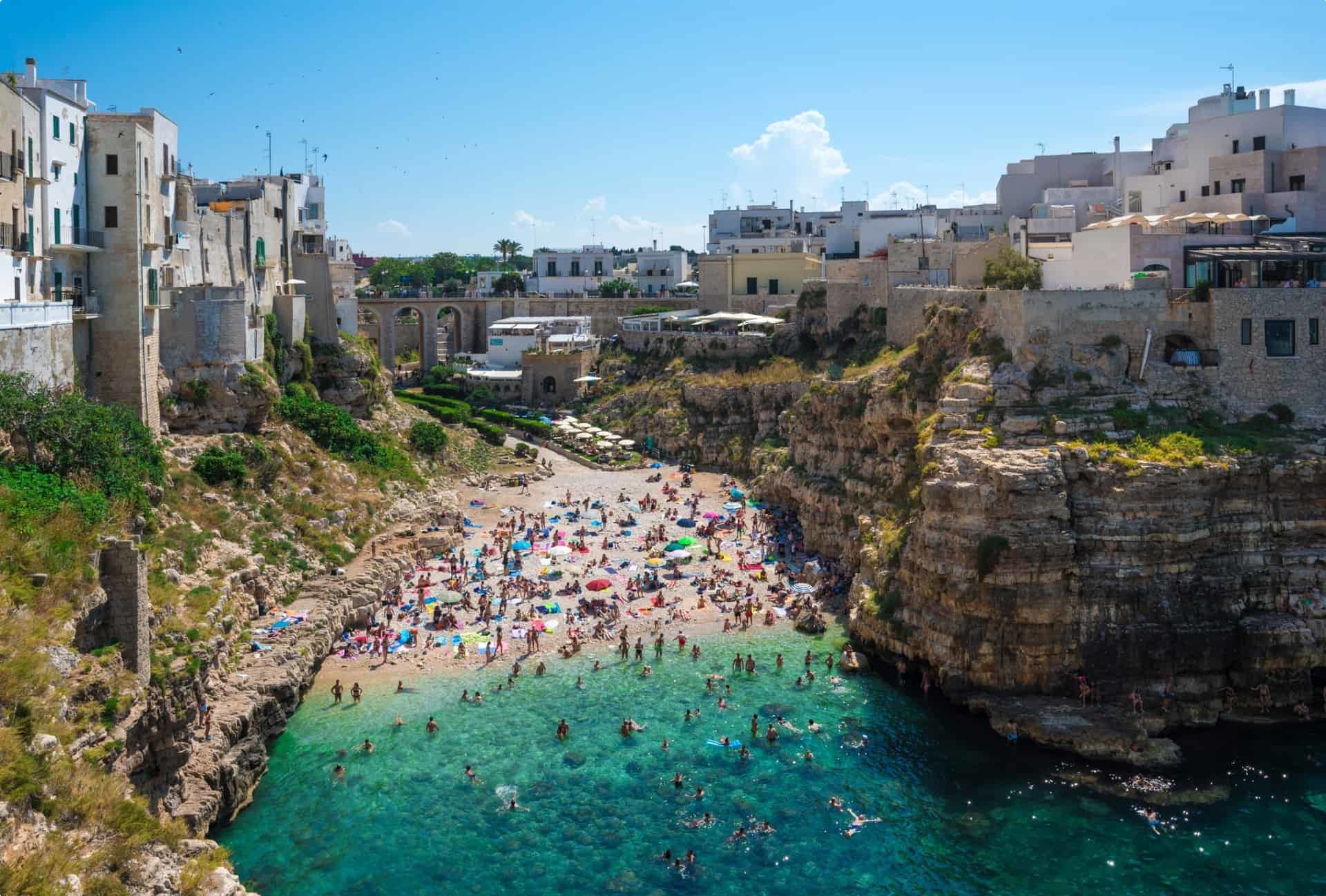
For a deeper dive into the rich historical tapestry of Southern Italy, we recommend engaging with Odyssey Traveller’s immersive tour, “Ancient History of Southern Italy & Sicily.” This meticulously curated journey is tailored for the discerning senior traveller seeking an active exploration of the region’s storied past. Led by an experienced Odyssey Program Leader, this small-group expedition promises a captivating exploration of Southern Italy’s iconic sites and landmarks. Delve into the captivating narrative of this region by signing up for this enlightening experience today.
Updated on January 6, 2020
Articles about Italy published by Odyssey Traveller
- History of a City: Florence
- The Sicilians and their Kings
- Empires Crossing the Mediterranean: 1130-1300
- Secrets of Venice: A History of Espionage
- Secrets of Florence: The Definitive Guide for Travellers
- The Roman Empire
- Who were the Roman Emperors? The Definitive Guide for Travellers
- Key Figures of Renaissance Florence
- Italian Renaissance Families: The Medicis
- About Malta, Sicily, Sardinia and Corsica: islands of the western Mediterranean
- Trip advice for travellers going to Italy
- as well as more articles on Italy here
For all the articles Odyssey Traveller has published for mature aged and senior travellers, click through on this link.
External articles to assist you on your visit to Southern Italy
Related Tours
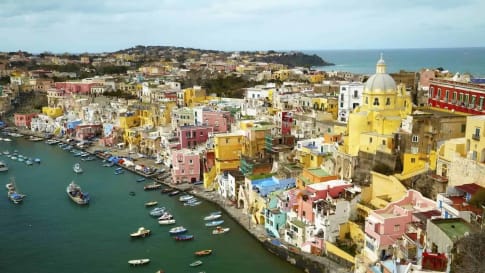
22 days
Jan, Apr, SepAncient History of Southern Italy & Sicily group tours
Visiting Italy
Our program for senior travellers, as well as featuring the rugged countryside of Southern Italy, also encompasses learning about the many civilisations that have shaped this land. We learn about the influence of the early Phoenicians, Greeks, Romans, Byzantines, Saracens, and Aragonese.
From A$16,995 AUD
View Tour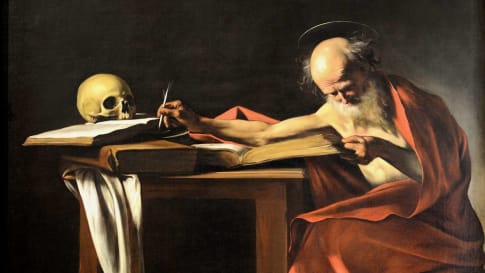
20 days
May, OctCaravaggio’s Journey | Small Group Tour in Italy
Visiting Italy, Malta
On this small group tour of Italy and Malta for mature and senior couples and solo travellers we trace the life of Caravaggio, exploring the artistic works he left behind and the tumultuous life he led. We follow him from his birthplace in Milan to Rome, Malta, Sicily and Naples. In each place he lived Caravaggio left behind a rich legacy of art for us to admire.
From A$15,125 AUD
View Tour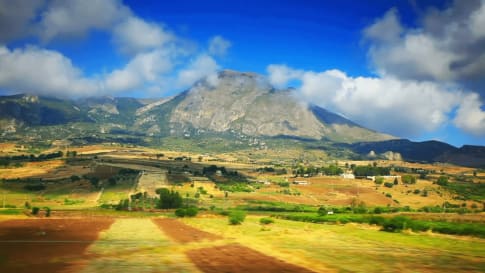
12 days
Apr, Oct, SepMalta & Sicily - Mediterranean Islands small group tour
Visiting Italy, Malta
For centuries Malta & Sicily, held the key to the Mediterranean. Unlike other European tour companies, Odyssey provides a tour leader and local guides to share detailed itineraries about the destinations on these small group journeys. For mature couples and solo travellers. A reasonable single supplement is charged.
From A$10,150 AUD
View Tour
25 days
Apr, Sep, OctMediterranean Islands Small Group Tour | Malta, Sicily, Sardinia and Corsica
Visiting Corsica, Italy
For centuries Malta, Sicily, Sardinia and Corsica held the key to the Mediterranean. Unlike other European tour companies, Odyssey provides a tour leader and local guides to share detailed itineraries about the destinations on these small group journeys. This escorted tour of western Mediterranean explores the geography, history, culture and peoples of these 4 islands. Small group tour for mature couples and solo travellers. A reasonable single supplement is charged.
From A$19,750 AUD
View Tour
